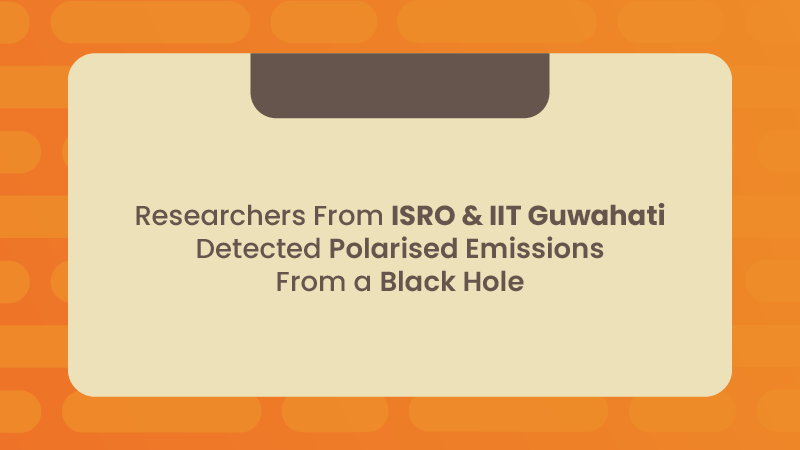Trending Now
Friday, Nov, 2024
Home / IISc's Scientists Unveils a Potential Breakthrough in Cancer Cell Detection and Elimination
IISc's Scientists Unveils a Potential Breakthrough in Cancer Cell Detection and Elimination
The core of this breakthrough lies in creating hybrid nanoparticles, seamlessly integrating gold and copper sulfide. These nanoparticles possess exceptional properties that empower them to detect and combat cancer cells effectively. When exposed to light, these nanoparticles exhibit a unique property: they absorb the light and convert it into localized heat.
 by Pragti Sharma /
by Pragti Sharma /  12 Sep 2023 22:01 PM IST /
12 Sep 2023 22:01 PM IST /  0 Comment(s) / 172
0 Comment(s) / 172

Image Courtesy : www.facebook.com/iiscbangalore
Scientists at the Indian Institute of Science (IISc) have achieved a significant milestone in the ongoing battle against cancer with their groundbreaking research on hybrid nanoparticles. These innovative nanoparticles, composed of gold and copper sulfide, offer a multifaceted approach to cancer detection and treatment.
The IISc's research aligns with the critical importance of early cancer detection and treatment. Their pioneering work combines both aspects into a single, versatile solution.
According to the official statement, the core of this breakthrough lies in creating hybrid nanoparticles, seamlessly integrating gold and copper sulfide. These nanoparticles possess exceptional properties that empower them to detect and combat cancer cells effectively. When exposed to light, these nanoparticles exhibit a unique property: they absorb the light and convert it into localized heat. This controlled heat application can be precisely directed to cancer cells, offering a targeted therapy approach. Additionally, these nanoparticles produce singlet oxygen atoms, known for their cancer cell toxicity, further enhancing their therapeutic potential.
Beyond their therapeutic capabilities, these hybrid nanoparticles introduce a novel method for cancer detection. They possess a distinctive photoacoustic property, emitting ultrasound waves when illuminated with light. This property enables highly accurate cancer cell detection. Compared to conventional imaging methods like CT and MRI scans, this approach offers superior contrast and resolution.
The potential clinical applications of these hybrid nanoparticles in cancer diagnosis and treatment are immense. They can be activated using light during endoscopic cancer screenings, providing a minimally invasive and precisely targeted approach. Their small size, less than 8 nm, allows them to navigate tissues efficiently and reach tumor sites.
While the nanoparticles' small size suggests potential for natural elimination from the body, comprehensive safety evaluations are imperative before human use. Preliminary tests involving lung cancer and cervical cancer cell lines in laboratory settings have yielded promising results, paving the way for further clinical development.
In summary, the Indian Institute of Science's pioneering research on hybrid nanoparticles marks a significant stride in the fight against cancer. Their unique combination of detection and treatment capabilities showcases their potential to revolutionize cancer care. This innovative approach underscores the pivotal roles of early detection and cutting-edge solutions in the ongoing battle against cancer.
News Source: NDTV

EShort / February 16, 2024
IMS Noida Admissions 2024: Apply for UG, PG programmes

EShort / February 16, 2024
GATE 2024: Response sheet out

EShort / February 16, 2024
BSSTET 2023: Admit card released

EShort / February 16, 2024
NID DAT 2024: Prelims result released

EShort / February 16, 2024
IIT JAM 2024: Response sheet released

Jobs / February 16, 2024
UPSC Recruitment Drive 2024: Apply for 120 vacancies in various departments

EShort / February 14, 2024
UPSC CSE 2024: Official Notification issued; application process begins

Editor's Desk / April 17, 2020
How Does Society Impact Our Education?

Current Affairs / April 22, 2020
Mr. Sudarsanam Babu appointed to U.S. Science Board.

Reforms / April 17, 2020
Traditional Structure of Education In India
.jpg)
Events & Seminars / April 17, 2020
PISA!!

Blog / February 26, 2021
Government's Action On #ModiRojgaarDo

EShort / May 19, 2022
CUET PG 2025 has started the registration process.

Notice Board on Important Dates / April 21, 2020
World Heritage Day

News / July 08, 2021
JEE Mains Registration For Session 3: Last Date To Apply

EShort / December 14, 2021
UPSC Declared Final Result For DCIO Recruitment

























0 Comments
Post Comments